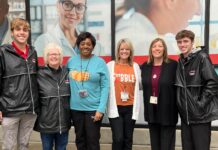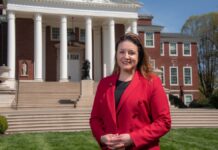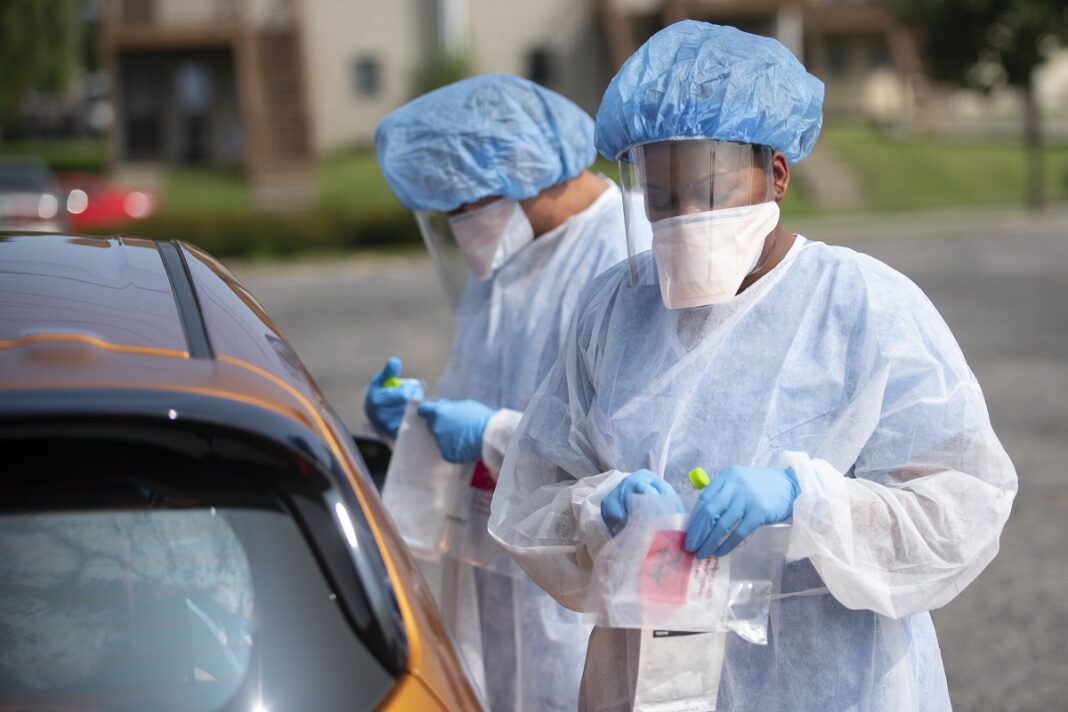
LOUISVILLE, Ky. – Results from the latest round of testing performed as part of the University of Louisville’s groundbreaking project to track COVID-19 in Jefferson County show twice the number of people likely were infected with the virus in late August than were reported publicly.
Between Aug. 25 and Sept. 1, investigators from the UofL Christina Lee Brown Envirome Institute tested nearly 3,000 Jefferson County residents for the Co-Immunity Project to detect the presence of the virus in participants’ nasal swabs by the polymerase chain reaction (PCR) method and for the presence of antibodies against the virus in their blood.
The results showed that approximately 1.1% of all the participants tested positive for active coronavirus infections. Among vaccinated participants only 0.7% had an active infection, while nearly 5% of unvaccinated participants were actively infected. This number would roughly correspond to 7,260 active infections in the county, a nearly tenfold increase in infection rates over the rates measured in April, despite a sharp increase in vaccinated residents, as shown in Figure 1.
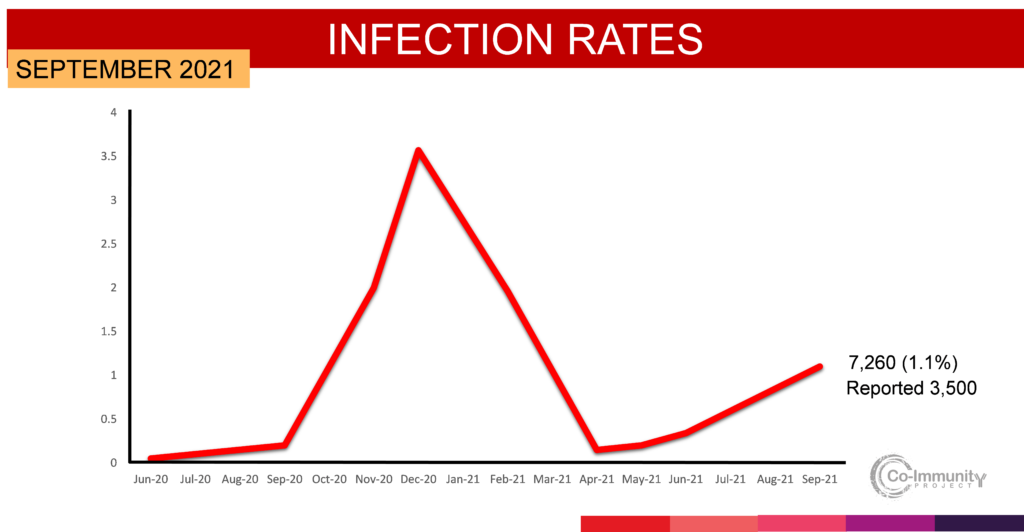
As in previous testing rounds, the team also tested for antibodies in participants. They found that independent of their vaccination status, in both the sampled and volunteer groups, nearly 16% of the participants had natural infection antibodies against the virus suggesting that they must have been infected by the virus in the recent past. These data indicate that in the last few months, at least 100,000 adults in Jefferson County have had COVID-19.
“These results highlight the steep rise in coronavirus infections in our community and provide a startling snapshot of the current state of the pandemic,” said Aruni Bhatnagar, director of the Envirome Institute. “Our estimates suggest that the number of infected individuals may be twice as high as that indicated in public records.
“Our work shows the vaccine is working as intended. Our population was almost 90% vaccinated, much higher than the 64% of fully vaccinated county residents. In the entire cohort, vaccinated people were over 12 times less likely to be infected compared with unvaccinated people. Though in our volunteer group, 65% of the active infections were in fully vaccinated individuals who had received the vaccine earlier this year. Most reported no or mild allergy-like symptoms and did not recognize that it may be a COVID infection thus did not think they needed to get tested.”
The study also provided estimates of where in Jefferson County the infections are most prevalent. To identify infection rates in different areas, the researchers classified the participants into neighborhood zones, as shown in Figure 2.

The highest rate of active infection was found in Zone 3A, or far southwestern Jefferson County. The highest rate of those recently having had an infection was found in Zone 3B, central southern Jefferson County, as shown in Figure 3.

Participants from Zone 3B also reported lower rates of vaccination, although vaccination rates were lowest in Zone 1B in western Jefferson County, as shown in Figure 4.
“Even though nearly 90% of the participants in the entire study population were vaccinated, we had areas that reported as low as 60% vaccination, and the persistence of infection in some geographical areas seems to be related to lower rates of reported vaccination,” said Rachel Keith, associate professor of environmental medicine at UofL who conducted the study. “Our results show that much work remains to be done and that knowing that rates of infection are high in their community may be an added incentive for some individuals to get vaccinated.
“Additionally, knowing that fully vaccinated individuals may still get an active infection allows those individuals to take additional precautions such as masking or testing which helps keep the community safe, including any young or immunocompromised friends and families who may need extra protection.”
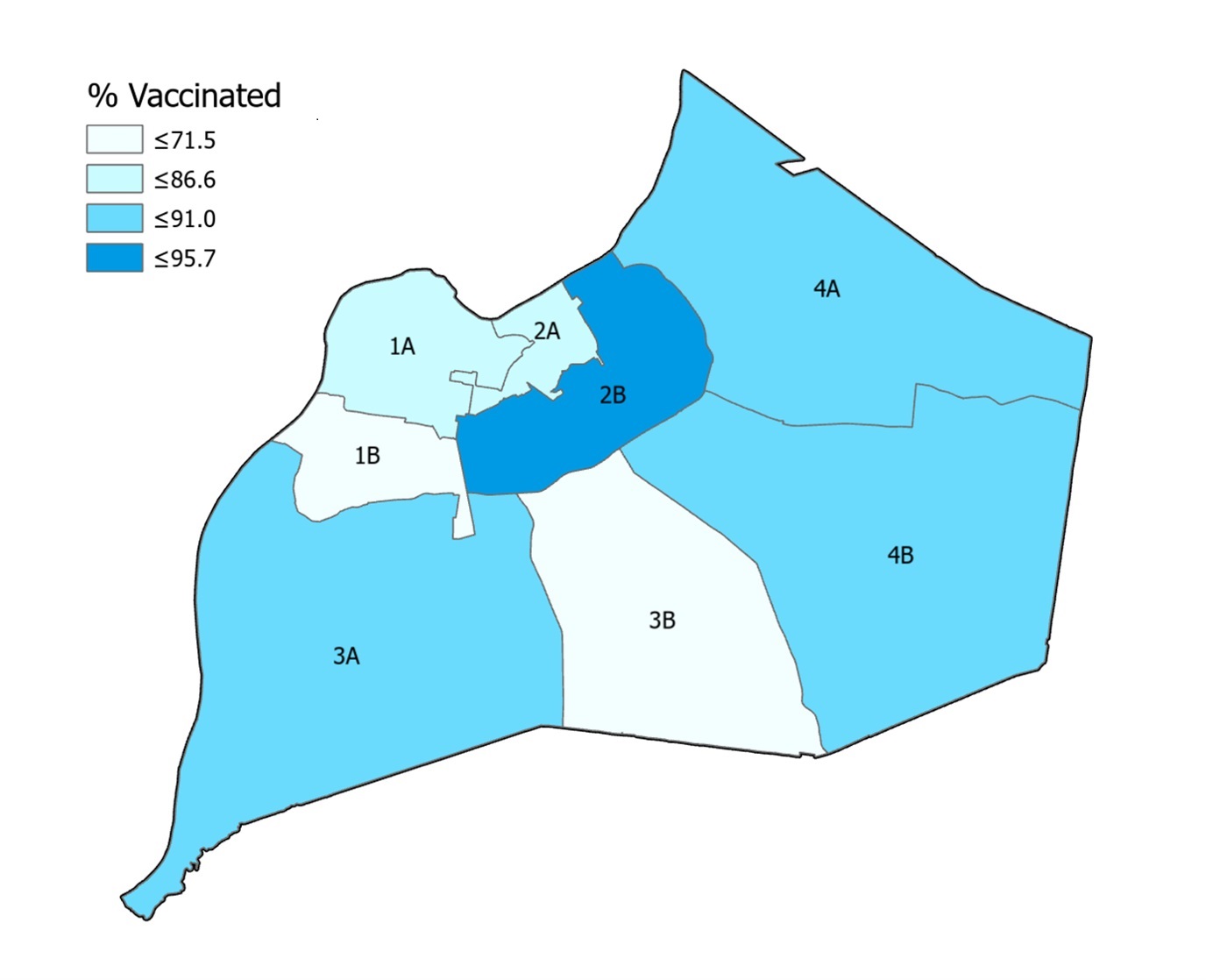
“The vaccine is very effective. Nearly 96% of vaccinated individuals had detectable levels of antibodies against the virus in their blood. However, in a small number of people (less than 0.6%) the levels of antibodies were undetectable in our assay, even though these individuals were fully vaccinated,” Keith said. “The lack of a measurable response in some individuals even after vaccination may be due to their health and immune status. We are analyzing our results to find out more about why some rare individuals do not develop high antibody levels in response to vaccination.”
Using the data from more than 7,000 individuals tested over the past year, the team is trying to identify personal and environmental characteristics that increase the risk for coronavirus infection and how vaccination reduces this risk.
For this round of testing, the team collected samples at 13 locations across Jefferson County. Active coronavirus infections were analyzed by Bluewater Labs and antibodies against the virus were assayed at UofL’s Regional Biocontainment Laboratory at the Center for Predictive Medicine for Biodefense and Emerging Infectious Disease.
To randomly sample people from all parts of the city and to include proportional number of individuals of different age and race/ethnicity, researchers at UofL partnered with Westat to mail approximately 30,000 letters asking people to participate in the study. Nearly 1,000 people who responded to this invitation were tested and an additional 1,886 booked their own appointments after hearing about the study in the news or on social media.
This study was supported in part by a contract with the Centers for Disease Control and Prevention.
###














